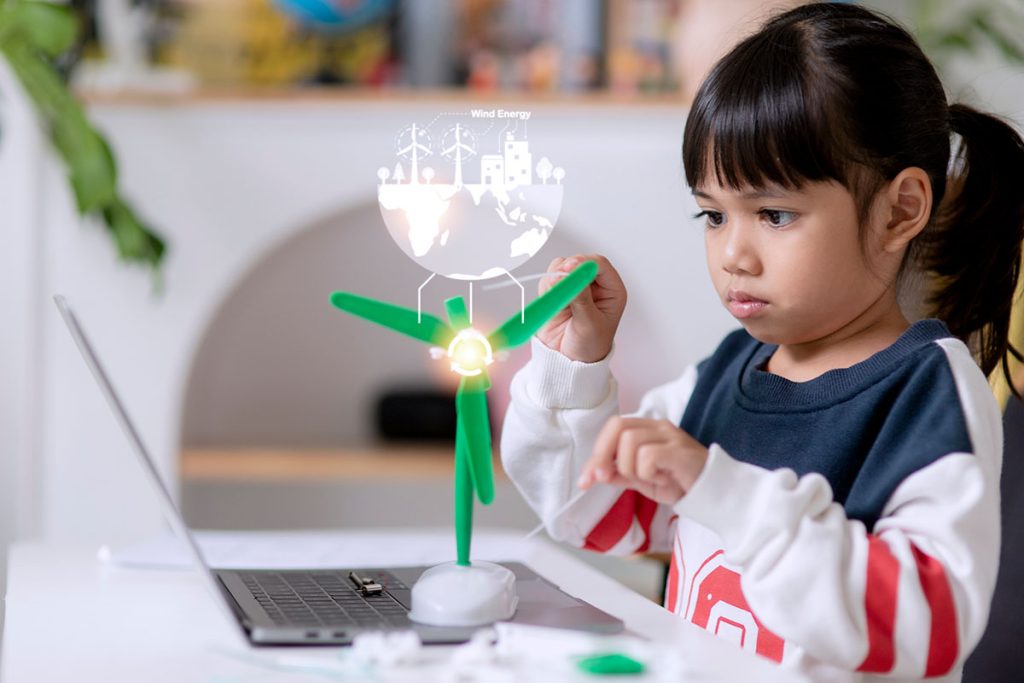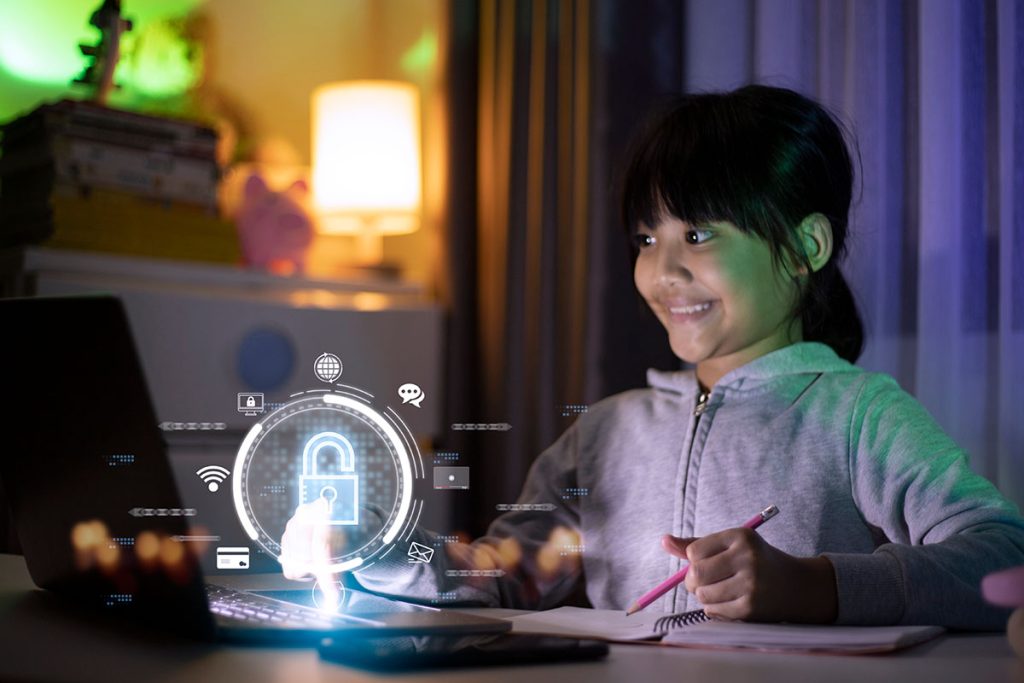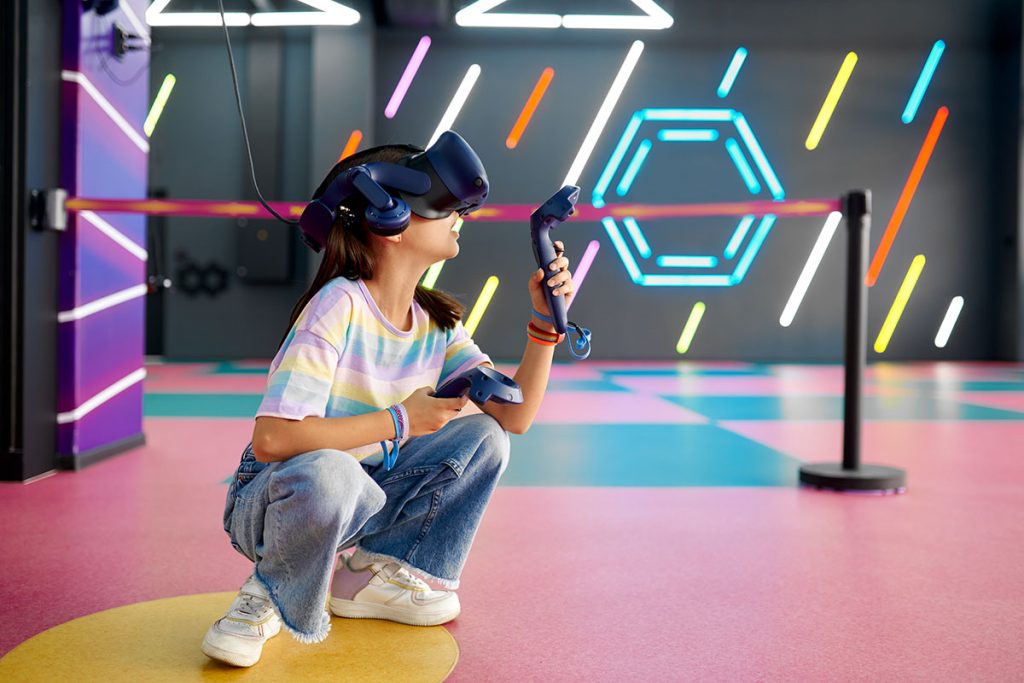The 21st century has been marked by the rapid ascent of digital technology, reshaping almost every aspect of daily life. From the way we communicate, work, play, and learn, the ‘digital revolution’ has left no stone unturned. Central to this transformation is the generation growing up with these technologies: the digital natives. These children, born into an era of smartphones, instant messaging, and virtual realities, have an unprecedented relationship with technology. But what does this mean for their development, safety, and future?
Through thoughtfully curated educational materials, we sow the seeds of knowledge, cultivating minds, bodies, and social connections for the leaders of tomorrow.
Zuzu Puzzle

The Rise of the Digital Native
Historical Context: The invention of the internet in the late 20th century was just the beginning. From dial-up connections to broadband and now 5G, the speed and expanse of the internet have grown exponentially. According to the International Telecommunication Union (ITU), as of 2020, 53.6% of the global population has internet access. This widespread availability has accelerated the integration of digital tools into children’s lives.
Childhood Digital Exposure: With tablets becoming as common as crayons, children’s early exposure to screens is on the rise. The American Academy of Pediatrics (AAP) in 2016 recommended limited or no screen time for children younger than 18 months. But how feasible is this in a digitized household?
Brain Development and Digital Devices: Early and consistent exposure to screens can influence neural connections. Children’s Hospital of Los Angeles (2018) reported variations in brain chemistry among teens spending more than 7 hours on screens.
Technology and Early Childhood
The Impact of Screens on Infants: Infancy is a critical period for brain development. Overexposure can affect their developing sensorimotor, visual-motor, and social skills. A 2019 study by Cincinnati Children’s Hospital noted reduced brain white matter integrity in preschoolers with more screen time.
Balancing Digital and Physical Play: While digital play can offer educational benefits, physical play enhances motor skills, spatial reasoning, and social interaction. A 2018 report from the National Association for Sport and Physical Education indicated a 50% decline in organized sports participation among children in the past decade.
Toddlers and Interactive Media: Interactive apps and games are becoming a staple for toddlers. However, their impact on cognitive and emotional growth is still debated among experts.

Digital Literacy and Education
The E-learning Movement: Traditional classrooms are making way for virtual platforms. Khan Academy, Coursera, and EdX are becoming household names, with millions enrolling for online courses.
Online Research Skills: The vastness of the internet presents challenges in discerning credible from non-credible sources. Universities like Stanford now offer courses on digital literacy for youngsters.
Digital Classroom Tools: Interactive tools like SMART Boards, digital textbooks, and learning management systems are revolutionizing teaching methodologies.
Online Safety
The Dark Corners of the Web: The internet is vast and not always safe. Cyber predators, inappropriate content, and dark web are threats that children might inadvertently come across.
Cyberbullying: The anonymity of the internet has given rise to cyberbullying. According to the Cyberbullying Research Center, about 34% of students acknowledge being cyberbullied during their lifetime.
Privacy and Data Security: Children’s personal data is at risk. In 2018, TÜV SÜD found that 8 out of 10 toys with online connectivity had glaring security loopholes.

Cultivating Healthy Eating Habits in Children
The Age of Comparison: Social media has cultivated an era of perpetual comparison amongst youths. Platforms like Instagram and Snapchat encourage youngsters to continually contrast their physical appearances, lifestyles, and achievements with others. This can lead to body image disorders, low self-esteem, and depression.
The Chase for Validation: “Likes”, “shares”, and “followers” have become the new social currencies. Particularly popular among the younger generation, these forms of interactions have led to a culture where children and teens gauge their worth based on these engagements. Consequently, there’s an increased quest for validation and extrinsic approval among the youth.
FOMO (Fear of Missing Out): One of the most profound psychological impacts created by social media. Constant exposure to the lives of friends and family amplifies the fear of missing out among young people. This triggers the incessant need to stay online, which can adversely affect a young person’s psychological well-being.
Video Games
The Cognitive Benefits: Video games, beyond being merely entertainment tools, can contribute to the development of cognitive skills. Particularly, strategy games aid in honing analytical thinking, problem-solving, and hand-eye coordination.
The Flipside: An excessive fondness for video games can lean toward addiction. Over-gaming can lead to physical health issues, sleep disorders, and social isolation.
Gaming and Learning: Educational video games offer children the joy of learning while playing. Game-based learning platforms can assist students in subjects like math, science, and languages.

Empowering Kids in the Digital World
Coding for Kids: Coding is perceived as one of the fundamental skills for the 21st century. Encouraging children to code imparts them with the essential skills to be more efficacious in the digital age.
Digital Art and Creation: Digital art and creativity platforms allow children to construct their stories, animations, and basic games. This fosters children’s creativity and problem-solving skills.
Safe Exploration: Ensuring that children remain safe in the digital world is paramount for parents and educators. Digital citizenship education provides kids with insights on how to stay secure online.
Balancing Digital and Real Worlds
Promote Analog Hobbies: Analog hobby activities can serve as a break from the digital world. Reading books, painting, or playing a musical instrument can enhance both the cognitive and emotional development of children.
Physical Activity: Due to the impact of digital tools, we’re adopting an increasingly sedentary lifestyle. Nonetheless, physical activity remains crucial for the overall health of children. Games, sports activities, and walks can ensure children stay physically and mentally healthy.
Screen-Free Zones and Times: Designating specific areas and times to limit screen usage can help children balance their connection with the digital world.
Conclusion
Balancing the analog and digital worlds is the challenge of the 21st century. With proper guidance, the digital realm can be a tool for growth, learning, and empowerment for the next generation.





